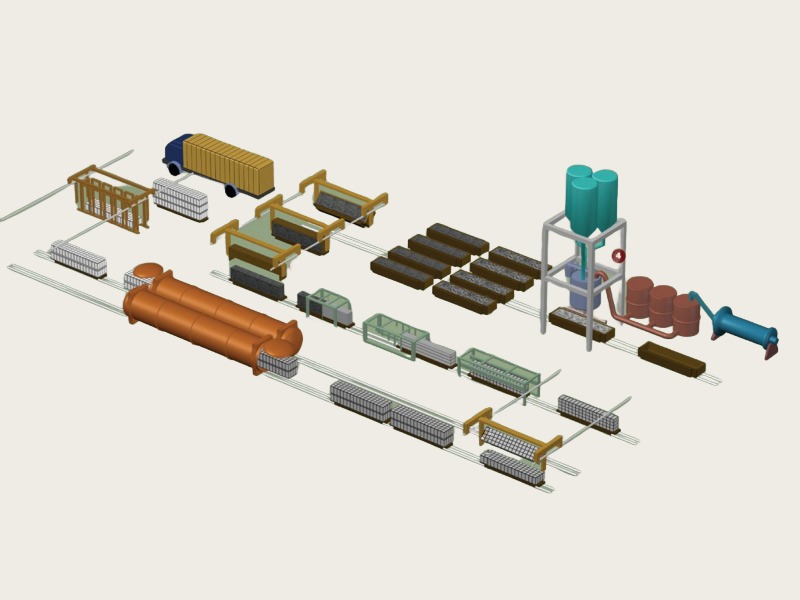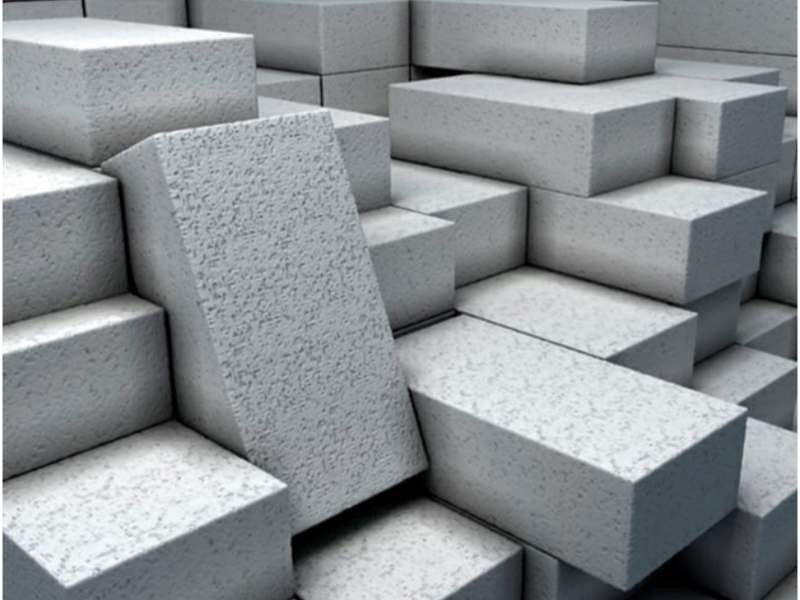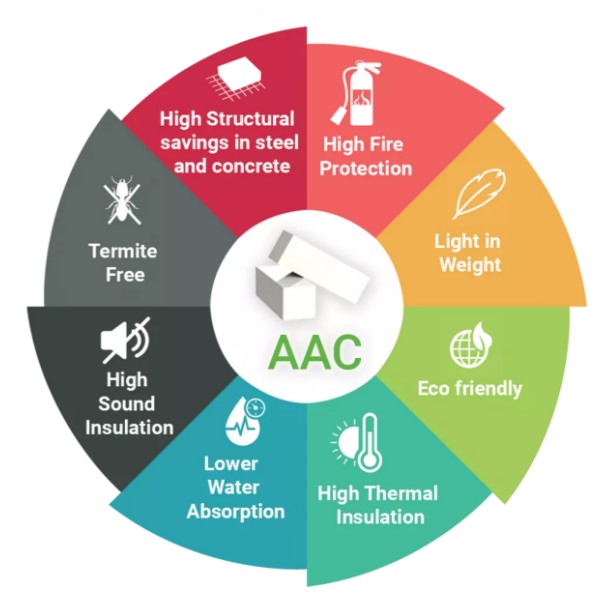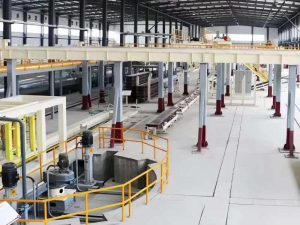The AAC Block Manufacturing Plant is a complete production facility dedicated to the manufacture of autoclaved aerated concrete blocks, also known as AAC blocks.
Unlike traditional concrete blocks, which are formed through mechanical compression, the AAC Block Plant uses a unique process of chemical foaming and high-pressure steam curing to transform raw materials such as cement, lime, and fly ash into a lightweight, porous new building material.
Production capacity: 30000m³/Y to 600000m³/Y
Jenis: separa automatik/ automatik sepenuhnya

3 Types of Loji Pembuatan Blok AAC
According to production capacity, Loji Pembuatan Blok AAC can be divided into small, medium and large scale.
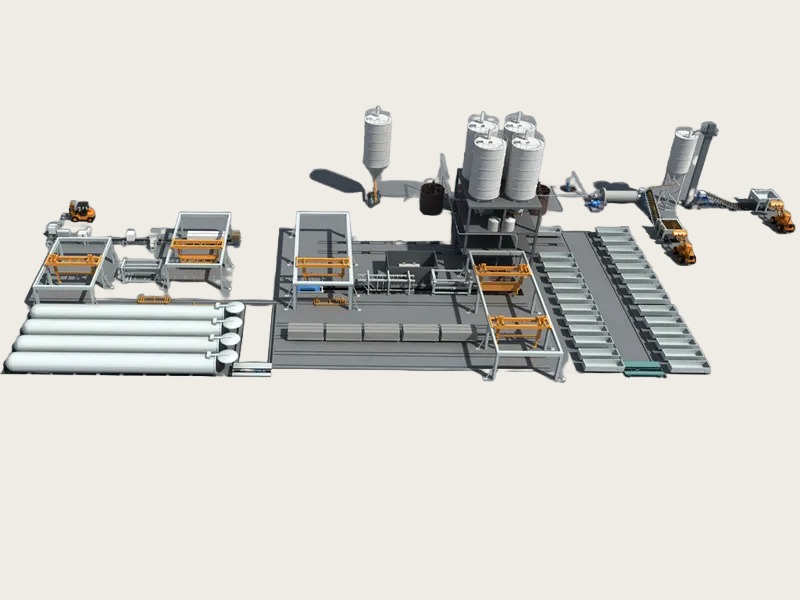
Mini/small Loji Pembuatan Blok AAC
Capacity: 30000-100000 m3/year
Autoklaf: 1-3 sets
Factory: about 4000-10000m2
Types: semi-automatic/ fully automatic
Features: low initial investment, high flexibility.
Suitable for: Start-ups or enterprises with limited investment and small market demand.
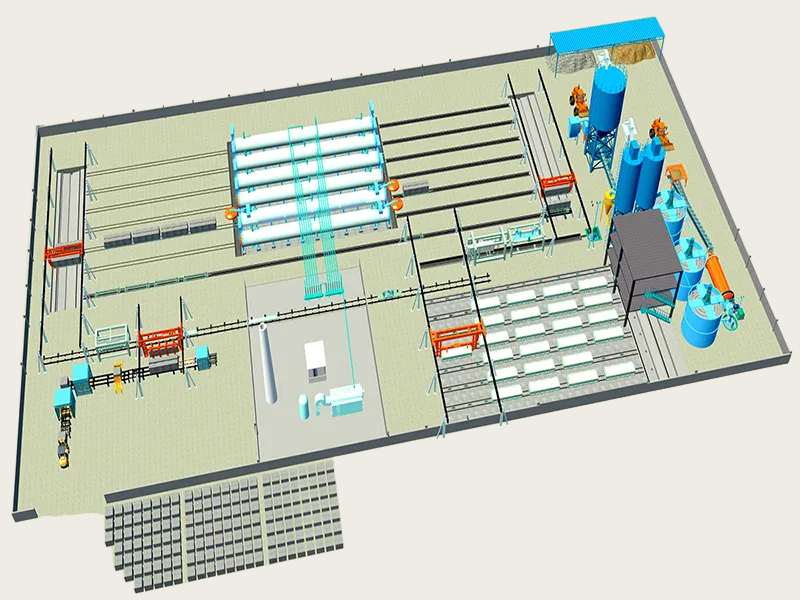
Skala sederhana Loji Pembuatan Blok AAC
Capacity: 100000-200000 m3/year
Autoklaf: 4-8 sets
Factory: about 10000-20000m2
Type: fully automatic
Features: stable production capacity, controllable costs, flexibility, large-scale production, etc.
Suitable for: Enterprises with a certain market share and stable demand.
AAC Block Manufacturing Plant Price
Small AAC Block Manufacturing Plant price:
- Price range: $150,000 – 300,000.
- Influencing factors: Actual annual output, brand, quality of key components, additional functions, etc.
- Example: A 50,000 m³ machine with reliable components is around $250,000.
Medium scale AAC Block Manufacturing Plant price:
- Price range: $500,000 – 1,000,000.
- Influencing factors: Annual output, automation degree, performance of key equipment, after-sales service.
- Example: A 150,000 m³ machine with advanced automation is around $800,000.
Large AAC AAC Block Manufacturing Plant price:
- Price range: Over $1,500,000; super – large lines (400,000 m³ +) can reach $3,000,000 .
- Influencing factors: Large-scale equipment, high-end intelligent control systems, energy-saving technologies, large-capacity autoclave groups, after-sales service.
- Example: A 300,000 m³ machine with top configuration is around $2,500,000.
Advantages of Loji Pembuatan Blok AAC
Reduced building weight: AAC blocks are 40% lighter than traditional concrete, significantly reducing the weight of the entire building.
Fully controllable process: The plant boasts an integrated production line, enabling complete control over the entire process, from raw material input to finished product.
Flexible production capacity: The plant can produce 30,000 to 600,000 cubic meters of AAC blocks annually, accommodating both small-scale and large-scale needs.
Stable product quality: Computer-controlled batching and real-time quality monitoring ensure consistent quality across each batch.
Turning waste into treasure: 70% of the raw materials used in the production process are industrial waste, such as fly ash from power plants, transforming unused waste into useful building materials.
AAC Block Plant Process
Raw material process → Batching and Mixing → Pouring → Static pre-curing → Cutting → Autoclaving Curing → Finished product Processing
1. Raw Material Processing: Sand is crushed and ground to the desired fineness. Cement, lime, and gypsum are stored in silos, and aluminum powder is mixed with water to form an aluminum slurry.
2. Batching and Mixing: The various raw materials are weighed according to precise proportions and then thoroughly mixed in a mixer to form a uniform slurry.
3. Pouring: The mixed slurry is poured into steel molds. The size and shape of the molds can be designed to meet the desired block specifications.
4. Static Pre-curing: The molds containing the slurry are transported to a pre-curing area where the slurry gradually hardens under suitable temperature and humidity conditions to achieve initial strength. This process typically takes several hours.
5. Cutting: After the slurry is pre-cured, it is cut into the desired size and shape using high-precision cutting equipment, steel wire or blades.
6. Autoclave Curing: Blocks are placed in an autoclave and cured for several hours at temperatures of 175-200°C and pressures of 10-15 bar, significantly enhancing the blocks’ strength and durability.
7. Finished Product Processing: After autoclave curing, the blocks are removed from the autoclave and transported to a storage area. After inspection and packaging, they are ready for shipment.
Main Equipment in AAC Block Plant
The AAC block manufacturing plant is a complete system consisting of 10 types of main equipment and 5 types of auxiliary equipment.
The 10 main equipment items include:
Jaw crusher, ball mill, bucket elevator, slurry metering tank, computer control console, mixer, pouring machine, aerated concrete cutter, autoclave, and boiler.
1. Jaw Crusher
Function: Function: Primary crushing of bulk siliceous raw materials (such as sand and silica tailings) or lumpy lime, reducing the particle size to below 50mm and providing qualified raw materials for subsequent grinding.
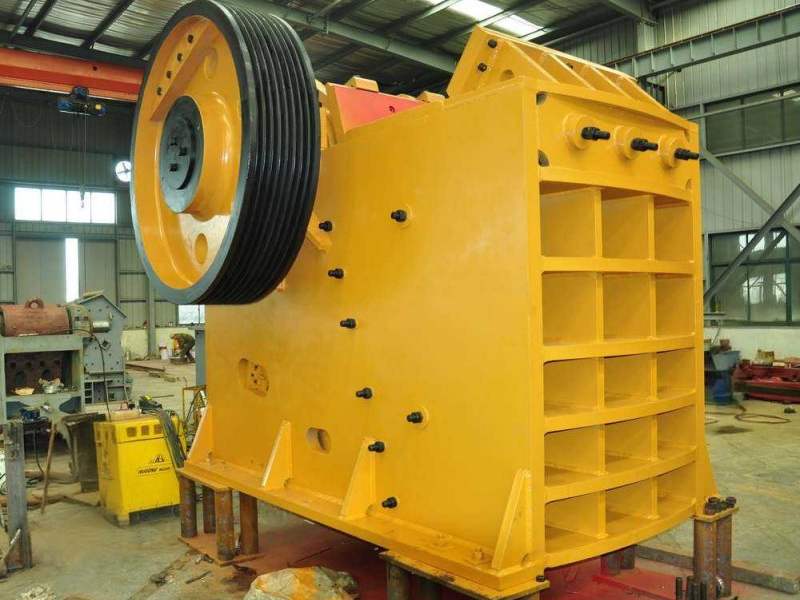
2. Ball Mill
Function: Finely grinds crushed raw materials (fly ash, sand, lime, etc.) to meet production requirements (typically 80-mesh sieve residue ≤ 15%), ensuring uniformity in subsequent slurry mixing.
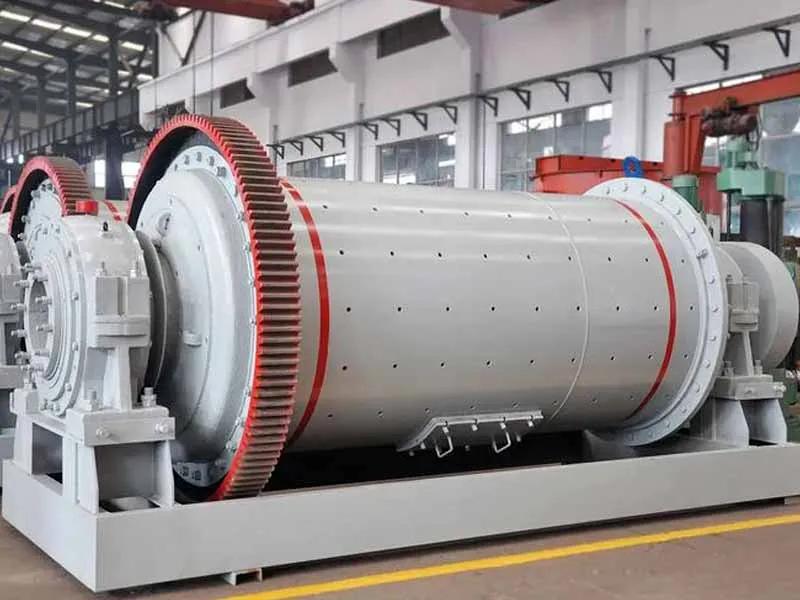
3. Bucket Elevator
Function: Vertically conveys raw materials (such as fly ash, cement, and ground fines) from storage silos to metering systems or mixers, enabling automated material transfer.
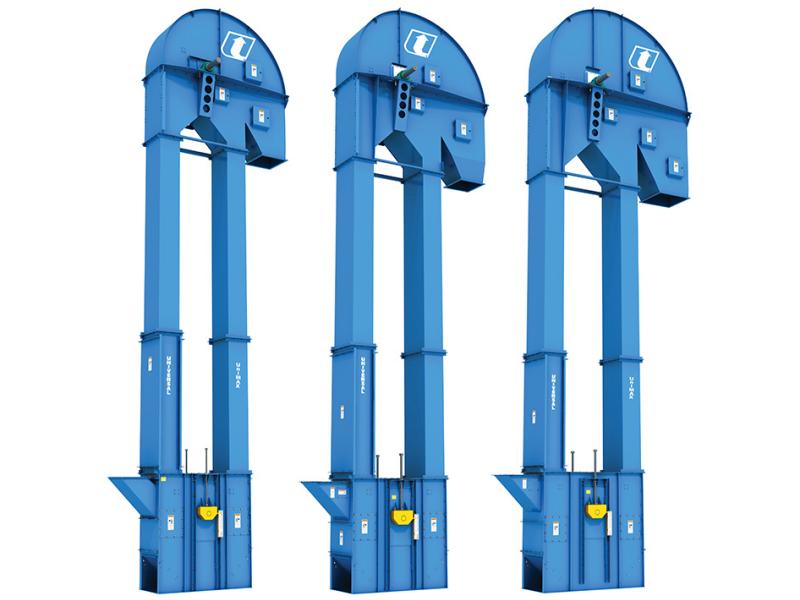
4. Slurry Metering Tank
Function: Accurately measures liquid raw materials (such as water, slurry) and additives, delivering them to the mixer according to the preset recipe, ensuring a ratio error of ≤1%.
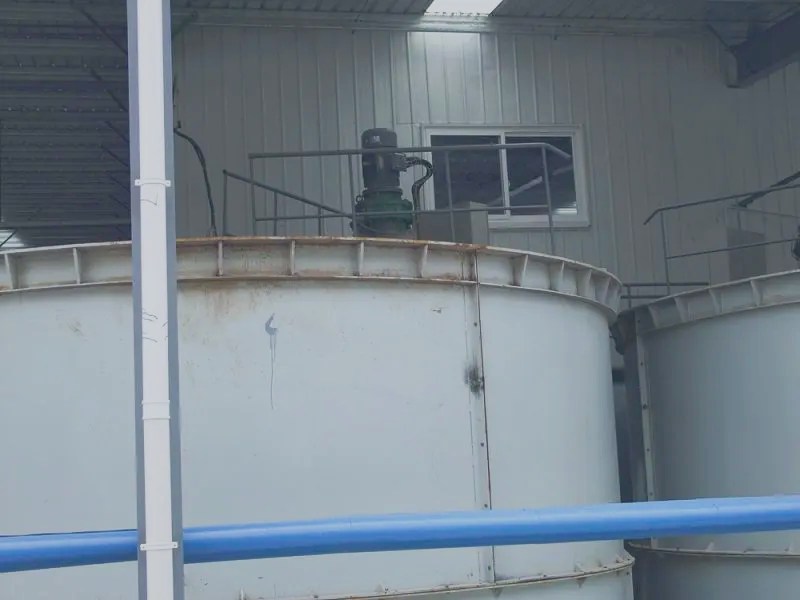
5. Computer Control Panel
Function: It serves as the central system of the production line, centrally monitoring and controlling all process parameters, including raw material ratios, mixing time, foaming temperature, autoclave pressure, etc., recording production data and generating reports.

6. Mixer
Function: Thoroughly mixes siliceous material, calcium material, water, aluminum powder gasifier, and other raw materials to form a uniform slurry, providing a qualified mixture for subsequent foaming and pouring.
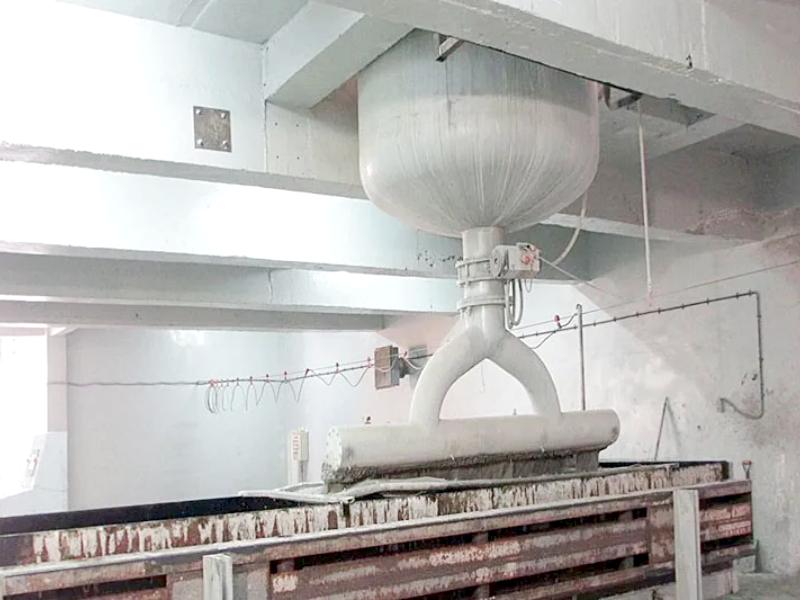
7. Casting Machine
Function: Quantitatively injects the mixed slurry into the mold frame, ensuring even distribution and providing a stable foundation for subsequent chemical foaming and green body forming.
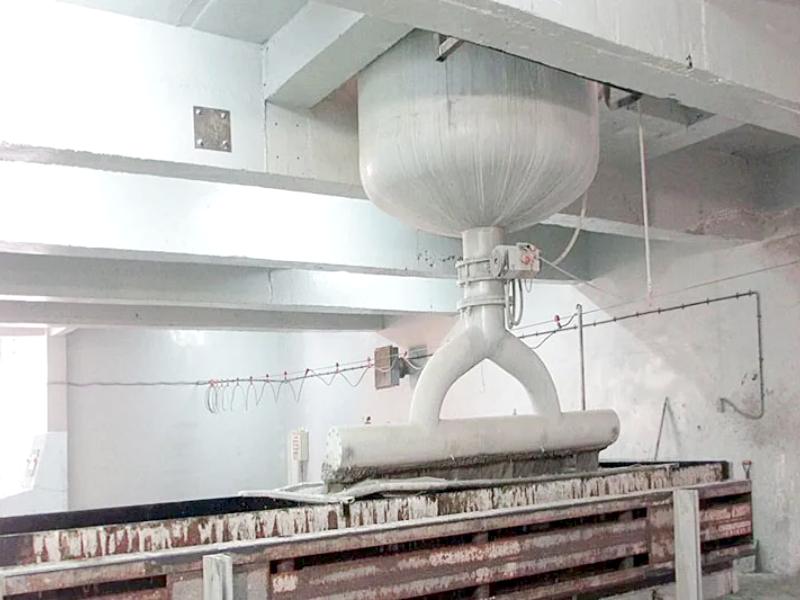
8. Aerated Concrete Cutting Machine
Principle: After the initial setting (but before it fully hardens), this machine cuts large blocks of concrete into standard sizes (e.g., 600 x 200 x 250 mm), or into custom sizes upon request.
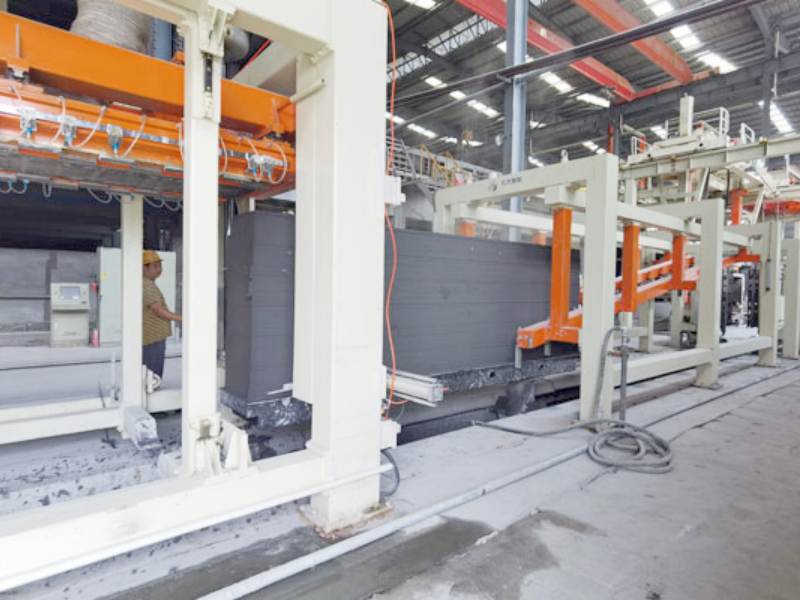
9. Autoclave
Function: High-pressure steam curing of the cut blanks at 170-200°C and 8-12 atmospheres of pressure allows the raw materials to undergo a hydration reaction, generating a high-strength crystalline structure and ultimately forming qualified AAC blocks.

10. Boiler
Function: Provides high-pressure steam for the autoclave. By burning fuel (such as natural gas or coal), it heats water to saturated steam, meeting the thermal energy requirements for autoclave curing.
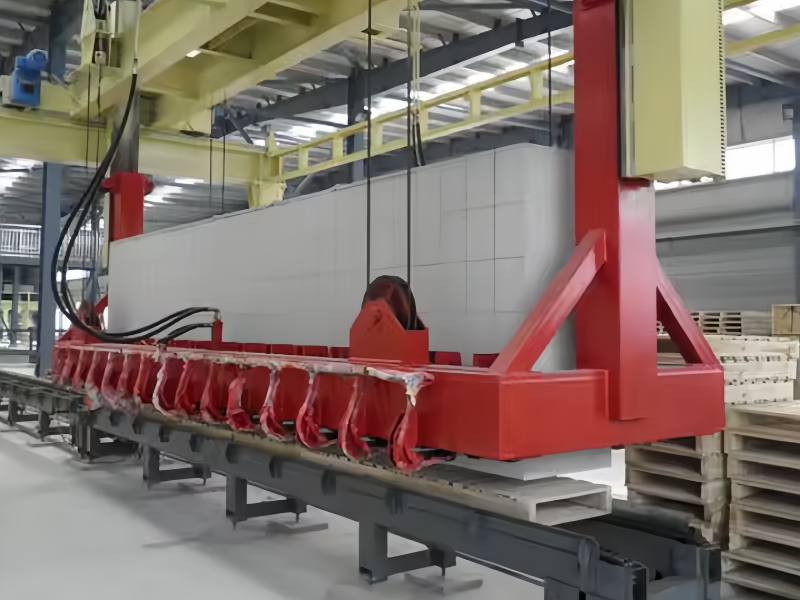
5 types of auxiliary equipment:
Mold frame, base plate, mold car, steaming car, shuttle car, lifting equipment.
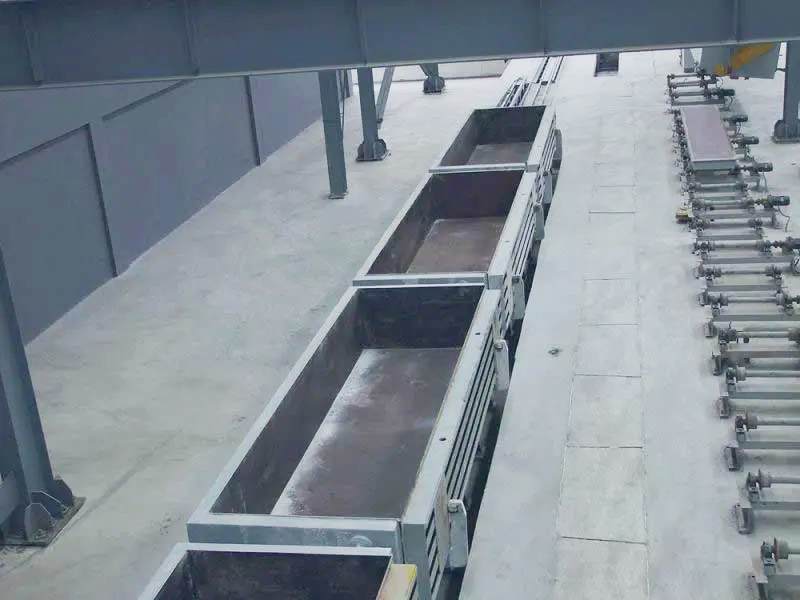
1. Mold Frame
Function: Serves as the container for the green body, holding the poured slurry and maintaining the green body’s shape during the foaming and initial setting stages. Its dimensions determine the initial size of the individual green bodies.

2. Mold Carriage
Function: Carries the mold frame and base plate, transports blanks between pouring, curing, and cutting processes, and automates the production process.

3. Steaming and Curing Cart
Function: Transports cut billets from the cutting area to the autoclave, carries the billets during the autoclave curing process, and then transports them to the finished product area after curing is complete.

4. Shuttle Car
Function: Transports cut billets from the cutting area to the autoclave, carries the billets during the autoclave curing process, and then transports them to the finished product area after curing is complete.

5. Lifting Equipment
Function: Used for lifting and transporting mold frames, base plates, and finished blocks, especially for mold cleaning, maintenance, and stacking finished products.
Raw Materials of AAC Block Production
Silica materials: fly ash (accounting for 70%), sand, silicon tailings, ceramic waste, stone processing waste, etc.
Calcium materials: cement, lime
Gas-generating agent: aluminum powder (high purity, ensuring uniform bubble distribution)
Additives: specialized additives to adjust reaction speed and product performance
The widespread availability of raw materials, particularly the reuse of industrial waste, gives AAC production significant cost advantages and environmental benefits.
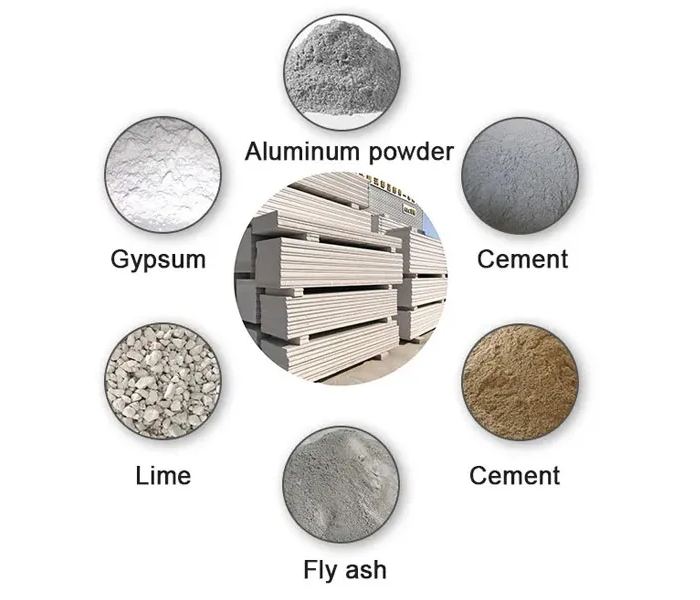
Core Technology in AAC Block Manufacturing
The core technologies of AAC Block Manufacturing Plant in two key processes: chemical foaming and autoclave curing.
- Chemical foaming: Aluminum powder reacts with alkaline substances in the slurry to generate hydrogen, creating a uniformly distributed pore structure and reducing the material density by 50%-70%.
- Autoclave curing: Steam is used in a sealed autoclave to hydrate the material, forming tobermorite crystals, imparting high strength and durability to the product.
- A zero-waste closed-loop water system is used.
- Waste heat recovery boilers achieve 15% energy savings.
- Automated control: A computer system monitors parameters such as ingredient ratios, reaction temperature, and autoclave pressure in real time to ensure stable production.
- The combination of these technologies ensures that AAC products possess the multifaceted properties of lightweight, high strength, and thermal insulation.
What is an AAC block?
AAC (Autoclaved Aerated Concrete) is made from cement, lime, sand/fly ash, water, and aluminum powder as a blowing agent through a process of foaming, pre-curing, cutting, and then autoclaving under high temperature and high pressure.
- 80% of its volume consists of uniformly closed pores, and its density (450–650 kg/m³) is only one-third that of traditional bricks.
- With a compressive strength of 3–5 MPa, it can be used for load-bearing and infill walls.
- The production process is environmentally friendly with zero sintering and combustion.
What is the AAC Block Used for?
| Scenario | Application Examples |
| Residential | High-rise infill walls, villa exterior walls, interior partition walls |
| Commercial | Shopping malls, hotels, hospitals, schools |
| Industrial | Factory enclosures, thermal insulation walls for cold storage |
| Special | Fire walls, passive houses, prefabricated buildings, precast stairs/roof slabs |
Advantages of Using AAC Blocks
Lightweight and High-Strength:
Its low density, only 1/3-1/4 that of ordinary concrete, effectively reduces the weight of buildings while maintaining high strength to meet structural requirements.
Thermal Insulation:
Its porous internal structure provides excellent thermal insulation, reducing building energy consumption by over 30% and improving energy efficiency.
Excellent Fire Resistance:
As a non-combustible material, it boasts a fire resistance limit of 3-4 hours, effectively slowing the spread of fire and protecting life and property.
Excellent Soundproofing:
Its porous structure effectively blocks sound transmission, enhancing the building’s sound insulation and creating a quiet and comfortable living and working environment.
Easy Construction:
AAC blocks are precisely sized and can be sawed, planed, and nailed, making the construction process simple and convenient, improving efficiency and shortening the construction period.
Environmentally Friendly:
The production process consumes industrial waste, reducing environmental pollution. No harmful gases are released during use, meeting green building requirements.
Profitability of an AAC Block Manufacturing Plant
1. Cost and Revenue Structure
Cost per cubic meter: Raw material cost approximately 150-200 RMB (fly ash accounts for 30%), energy cost 80-120 RMB (primarily steam), labor and miscellaneous expenses 50-80 RMB, for a total cost of approximately 300-400 RMB per cubic meter.
Market Price: Depending on the region, AAC blocks sell for 500-700 RMB per cubic meter, with a gross profit margin of 30%-40%, significantly higher than traditional blocks (gross profit margin approximately 20%).
2. Profit expectation of AAC plant with Different scales
| Plant Scale | Annual Capacity (10,000 m³) | Annual Revenue (USD) | Annual Net Profit (USD) | Payback Period |
|---|---|---|---|---|
| Small-scale | 3-10 | $350,000 – $490,000 | $14,000 – $28,000 | 3 – 5 years |
| Skala sederhana | 10 – 20 | $700,000 – $1,960,000 | $42,000 – $112,000 | 4 – 6 years |
| Large-scale | 30 and above | $2,100,000+ | $140,000+ | 5 – 7 years |
Services We Offer
- Perancangan & Reka Bentuk Projek
Provide overall planning and detailed design schemes for AAC block plants based on client needs and actual conditions, including process design, equipment layout, and civil engineering design. - Bekalan & Pemasangan Peralatan
Supply full sets of AAC production line equipment, and undertake installation and commissioning to ensure normal operation, meeting designed capacity and product quality standards. - Latihan Teknikal
Menawarkan latihan profesional untuk pengendali, juruteknik dan pengurus yang meliputi proses pengeluaran, pengendalian peralatan, penyelenggaraan dan pengurusan kualiti. - Perkhidmatan Selepas Jualan
Wujudkan sistem selepas jualan yang kukuh menyediakan panduan penyelenggaraan harian, penyelesaian masalah dan bekalan alat ganti untuk memastikan pengeluaran stabil yang berterusan. - Sokongan Teknikal & Naik Taraf
Menyediakan sokongan teknikal yang berterusan dan menawarkan penyelesaian peningkatan peralatan/transformasi teknikal berdasarkan keperluan pelanggan dan trend industri untuk meningkatkan kecekapan dan kualiti. - Kontrak Am EPC
Perkhidmatan EPC sehenti daripada reka bentuk, perolehan peralatan, pembinaan awam, pemasangan dan latihan kepada pengeluaran percubaan untuk pengalaman tanpa kerumitan.
